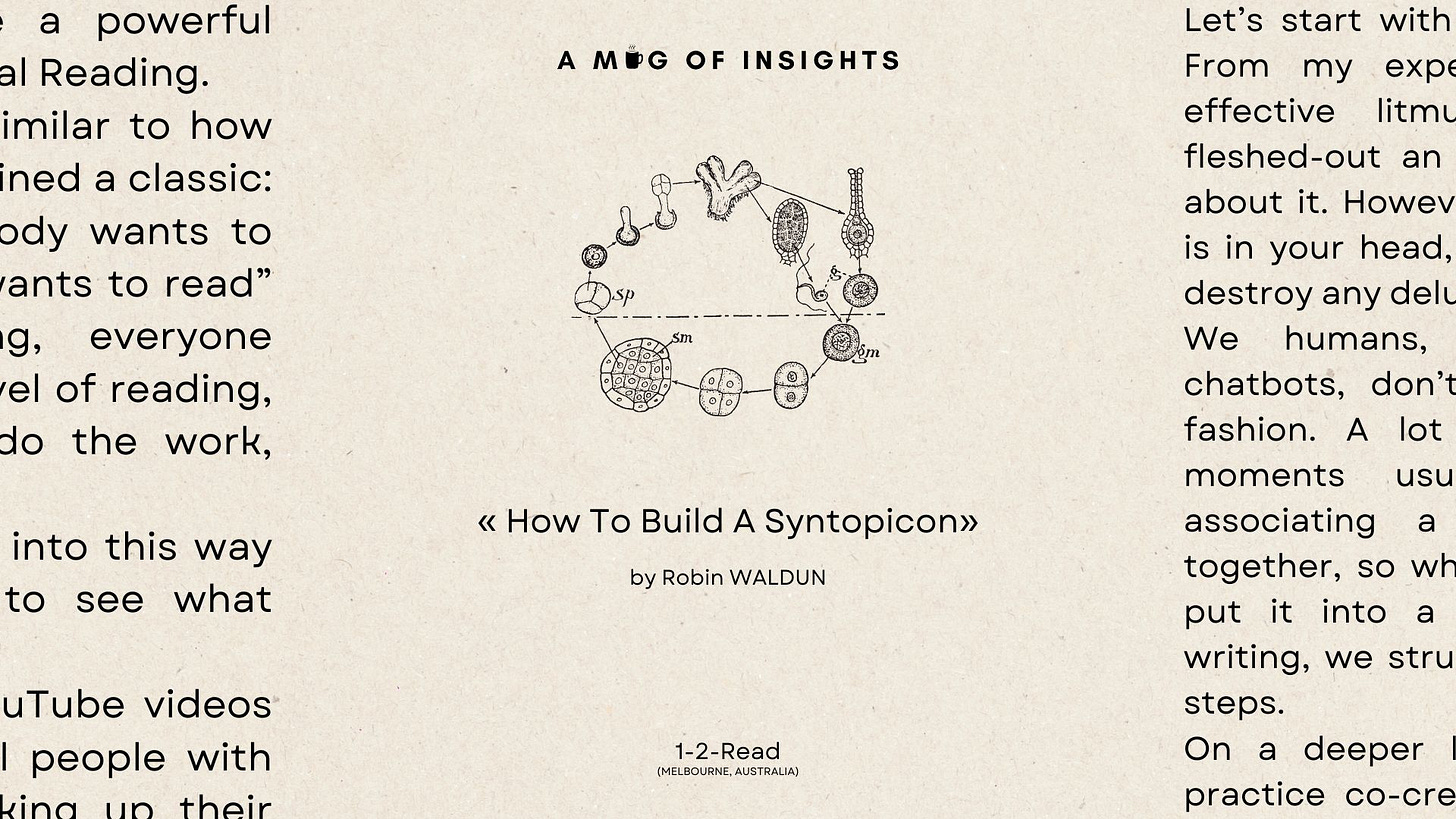[1-2-Read] How To Build A Bank of Ideas From Your Reading (expanded)
A step-by-step guide to building a syntopicon
This is another repost of the 1-2-Read newsletter for paid subscribers. Leave me any feedback below, and I’ll decide on the next issue’s topic based on your suggestions. Thank you for your support, and we’ll be back next Friday for our regular columns.
updated! I expanded a few more examples to make it more concrete. Thank you for your support and love!
Robin
(1) The Idea: What Is Syntopical Reading?
This week, let’s tackle a powerful concept called: Syntopical Reading.
This way of reading is similar to how Mark Twain allegedly defined a classic: “something that everybody wants to have read and nobody wants to read” For Syntopical Reading, everyone wants to get into this level of reading, but no one wants to do the work, including me.
However, before we get into this way of reading, it’s useful to see what we’re up against.
We’ve all seen those YouTube videos and TikToks of beautiful people with pristine stationery, marking up their hardcover editions of Jane Eyre while leaving behind pages of cursive notes.
But when we sit down and try to do this ourselves, we’re left with squiggly underlines done on a shaky bus, notes that sound like midnight mad murmurs and a sense of despair: we don’t have the time to make perfect notes on everything we’ve read.
Even for those of us mad enough to make perfect notes, it’s difficult to ever convince ourselves to review them. We’re essentially trading time for a bank of beautiful yet useless notes.
See, in schools, we were taught to take notes in a linear fashion. I still have my AP psychology notes, where 1.1 was the lobes of the brain, 1.2 were the cortices responsible for motor functions, and 1.3… where’s the snooze button?
The problem is that linear note-taking, however pretty and structured, has virtually 0 practical value when we try to recall key ideas. A page of such notes only provides information, as in putting random crap in-formation. But if you’re a reasonable person, you’d have to agree that ideas rarely present themselves in a linear fashion.
So, in order to capture the true shape of ideas, we need a different way of thinking about note-taking.
This is where Syntopical Reading comes in. The word syntopic literally means “a collection of different topics”. These topics can range from love to the craft of writing. From consciousness to weird medieval torture practices.
Now, as we flick through books, we’ll start to realise that authors tend to have their own takes on these topics. Kafka’s idea of love is a far cry from Flaubert’s, and Hegel would’ve gotten into a shouting match with Foucault if they sat down to talk about history.
This is where you come in as an intelligent reader. As someone who is after understanding, it isn’t enough just to write a whole page of notes on any one of these takes on a topic. Sometimes, we need a bird’s-eye view to see how these ideas compare and contrast under the same topic.
Mortimer J. Adler in How to Read A Book provided some useful guidelines for achieving this syntopical overview of different topics. I won’t cover all of them here (because there’s a lot of needless fluff in that chapter). But the essential points are as follows:
1: Find The Relevant Passages
Keep reading with a 7-day free trial
Subscribe to A Mug of Insights to keep reading this post and get 7 days of free access to the full post archives.



